Eddie Bauer BC EverTherm Down Jacket
Reviewer: 5’8”, 155 lbs
Size Tested: Small
Blister’s Measured Weight: 493 grams
Materials:
- Shell: 2-layer WeatherEdge Pro w/ 15-denier nylon ripstop face fabric
- Insulation: 45-g EverTherm Down
- Lining: 15-denier ripstop nylon
Stated Features:
- Adjustable insulated hood
- Stormrepel Super DWR
- Adjustable drawcord hem
- Hook-and-loop cuff closure
Pockets:
- 2 hand (zippered)
- 1 exterior chest (zippered)
- 1 interior chest (zippered)
- 1 interior mesh (drop-in)
MSRP: $499
Test Location: Crested Butte, CO
Days Tested: 10
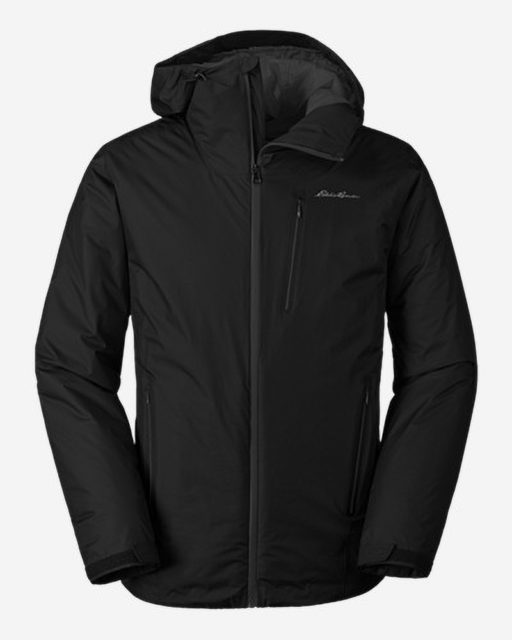
Intro
As more and more people get into the backcountry, companies are continuing to focus on creating garments that are lightweight and packable, but that still protect you from the elements.
The new Eddie Bauer EverTherm Down Jacket is one of those products, and it’s the lightest waterproof insulated jacket we’ve ever reviewed. In fact, it just might be the lightest waterproof down jacket on the market right now.
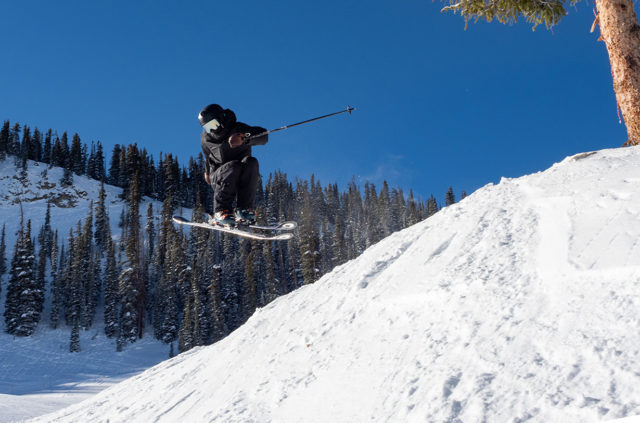
As with any lightweight piece of gear, we were very interested to see just how versatile and useful the BC EverTherm would be. So I’ve been using it all around Crested Butte, and have also been comparing it to another light, warm, and waterproof jacket, the Patagonia Micro Puff Storm.
Here’s what I’ve found:
Fit
I received the BC EverTherm in a size Small, though I typically wear a size Medium in most insulators and shells. However, the Small still fits me quite well.
The size Small BC EverTherm is a significantly shorter and slimmer than the size Medium Patagonia Micro Puff Storm, but I’d say the BC EverTherm has a pretty standard fit overall when compared to most shells and other outer layers.
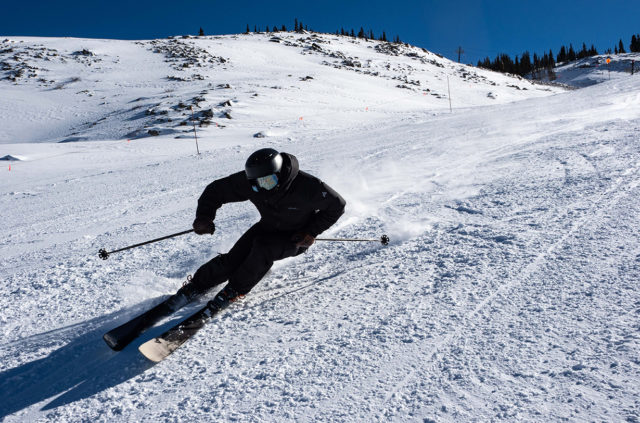
I have enough room to comfortably wear under the BC EverTherm a base layer and either a mid layer like the Patagonia Nano Puff or a slim shell like the Norrona Lyngen Hybrid. The size Small BC EverTherm is a bit too slim to fit over a base layer, mid layer, and a shell, but I imagine the Medium would work for this.
Features
For being so ridiculously light, the BC EverTherm actually has a lot of features.
It has a total of five pockets. There are two external zippered hand pockets, an external zippered chest pocket, an interior zippered chest pocket, and one interior drop-in pocket.
It’s nice to have three external pockets, but I’m personally not a huge fan of the zippers Eddie Bauer chose to use. They’re reverse-coil, water-resistant zippers that are laminated to the outer fabric of the jacket. I’ve found them to be more difficult to use than the zippers on the Micro Puff Storm’s pockets.
That said, I’m particularly picky about apparel, and I imagine most people won’t have a problem with these zippers.
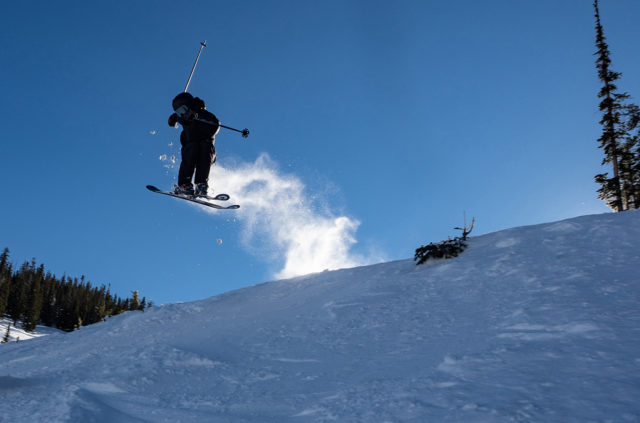
I’m very happy that Eddie Bauer included an interior, zippered, insulated chest pocket. This is great for a phone as it stays much warmer than when placed in a pocket outside the insulation.
The BC EverTherm’s interior drop-in pocket is a nice option for drying gloves, beanies, etc.
Beyond its pockets, the BC EverTherm has a hem that’s adjustable with cord locks, velcro-adjustable cuffs, and a three-point-adjustable hood.
The BC EverTherm’s hood works well with or without a helmet, and the three adjustments do a good job of snugging it down.
My only other (pretty minor) complaint with the BC EverTherm’s features is the big, stiff, reverse-coil main zipper. It’s proved to be more difficult to use than standard coil zippers like that on the Patagonia Micro Puff Storm, and the BC EverTherm’s main zipper snags fairly often. It also feels unnaturally stiff when combined with the BC EverTherm’s ultralight fabric and insulation.
Again, I’m a self-proclaimed apparel nerd who spent his college years learning about textiles, trims, and how to best combine them. So little things like this bother me, but they probably won’t bother many other people.
Weight
As I noted above, the BC EverTherm is the lightest waterproof insulated jacket we’ve ever reviewed, and I’ve struggled to find any other options on the market that come in lighter (but please let me know in the Comments section if you know of something lighter).
Getting an insulated, waterproof jacket to come in below 500 grams is extremely impressive, and made even more impressive when you consider the number of features on the BC EverTherm.
For reference, here are a bunch of weights for a number of other insulated, waterproof jackets. Keep in mind the size differences to keep things apples-to-apples.
493 g Eddie Bauer BC EverTherm Down Jacket, size Small (measured weight)
599 g Patagonia Fitz Roy Down Parka, size Large (measured weight)
610 g Arc’teryx Alpha IS Jacket (stated weight)
614 g Patagonia Stretch Nano Storm Jacket, size Large (measured weight)
614.5 g Patagonia Micro Puff Storm Jacket, size Medium (measured weight)
639 g Outdoor Research Floodlight Down Jacket (stated weight)
680 g Arc’teryx Tauri Jacket (stated weight)
825 g Black Diamond Mission Down Ski Parka (stated weight)
850 g Norrona Lofoten Gore-Tex Insulated Jacket (stated weight)
913 g Outdoor Research Blackpowder II Jacket (stated weight)
921 g Patagonia Insulated Snowshot Jacket (stated weight)
936 g Patagonia Primo Down Jacket (stated weight)
1000 g Arc’teryx Macai Jacket (stated weight)
1075 g The North Face Powder Guide Jacket (stated weight)
1125 g The North Face Anonym Jacket (stated weight)
1225 g The North Face Diameter Jacket (stated weight)
1240 g Norrona Roldal Gore-Tex Insulated Jacket (stated weight)
Materials
The BC EverTherm is comprised of an ultralight wateproof shell fabric, 45-g “Thindown” insulation, and a very light lining.
The waterproof fabric is Eddie Bauer’s proprietary “WeatherEdge Pro,” and the face fabric is a 15-denier nylon ripstop. Eddie Bauer says WeatherEdge Pro is rated at 20K/20K for waterproofing and breathability, which puts it right around the industry standard for high-end waterproof / breathable laminates. For a whole bunch of info on those ratings and what they mean, check out our Outerwear 101 article.
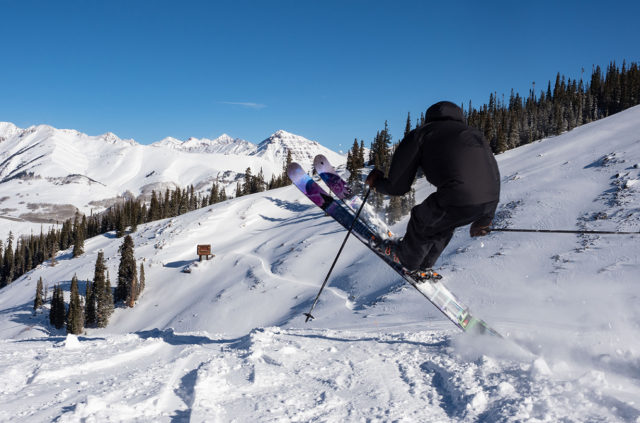
The 45-g Thindown insulation is a unique take on down insulation where the down clusters are laminated to a sheet in order to reduce down migration and overall “puffiness.” It also removes the need for baffles or quilting. I’d recommend reading our review of the original EverTherm jacket for more info on the insulation, but I can confirm that the BC EverTherm is noticeably less puffy / bulky than standard down garments, and even the synthetically insulated Micro Puff Storm.
Overall, the BC EverTherm feels incredibly light while wearing it, and I barely notice the jacket, apart from the stiff main zipper. It’s not quite as comfortable as the extremely cozy Micro Puff Storm, but the BC EverTherm is still very comfortable. The lining fabric can feel clammy on sweaty skin, but I’ve found that to be the case with pretty much all lightweight ripstop fabrics.
Weather Resistance
After using it in several snow storms and a bit of rain, the BC EverTherm’s WeatherEdge Pro membrane has done its job — I’ve never noticed any water getting through the jacket. The “Stormrepel Super DWR” on the BC EverTherm has worked well, though I haven’t noticed any significant difference between it and jackets with standard DWR’s.
Breathability
The BC EverTherm doesn’t really breathe, and I don’t really see that as an issue. It’s an ultralight piece designed to offer maximum weather protection and warmth at a minimal weight. If you want an insulated, warm, lightweight, waterproof jacket that breathes better, we highly recommend checking out the Patagonia Stretch Nano Storm.
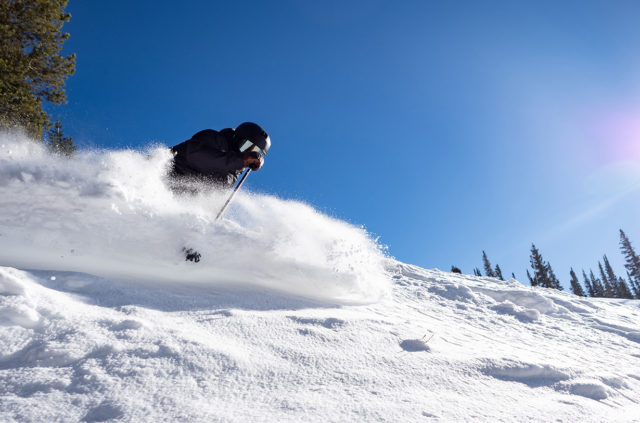
It is worth noting that the BC EverTherm does not feature any vents — whether in the form of mesh-backed pockets or pit zips. The Micro Puff Storm is a bit more versatile in this regard since its mesh-backed hand pockets offer a bit of ventilation, but neither piece is very breathable.
Warmth
The BC EverTherm is quite warm for its weight. I’d say it’s a bit warmer than a standard 800-fil-power down mid layer (e.g., Eddie Bauer EverTherm Down Hooded Jacket and Patagonia Down Sweater). Compared to the Patagonia Micro Puff Storm the BC EverTherm is a bit less warm, but it isn’t a huge difference.
I wouldn’t want to sit in the cold in the BC EverTherm for a really long time (e.g., at a long, cold belay), but I’ve been happy skiing in it at the resort with just a base layer in temps down to around 15°F.
Durability
After around ten days of use, I don’t have any major durability issues to report with the BC EverTherm. As with any ultralight piece, I would recommend being extra careful with the BC EverTherm when it comes to brushing it up against rocks, trees, etc. But so far, it’s held up well after several days skiing in the resort.
I’ll update this review if I notice any durability issues down the line.
Who’s It For?
People who want an extremely light, insulated, and waterproof jacket.
Those who don’t prioritize low weight should check out some heavier, burlier options like the Patagonia Primo Down Jacket. But if you really need to shave some grams of your kit and still want a jacket that’s warm and waterproof, the BC EverTherm is an excellent option.
I mentioned in the Micro Puff Storm review that I think it’s an awesome layer for backcountry touring since it fills the roles of a shell, mid layer, and emergency insulator. And for the most part, the BC EverTherm accomplishes this goal, and does so at an even lower weight.
The one thing to keep in mind is that the BC EverTherm will lose some of its insulative value if it gets wet. This shouldn’t be an issue for moisture coming from the exterior — the BC EverTherm’s waterproof fabric will fend that off. But if you have it smashed inside your pack and snow / water gets inside, the BC EverTherm won’t be as warm as a synthetic insulator like the Micro Puff Storm.
Bottom Line
Each year I’m impressed by just how light companies can make products while still maintaining most of (or all of) the performance of heavier pieces. The Eddie Bauer BC EverTherm Down Jacket is one of those pieces that comes in at an astonishingly low weight, but that still keeps you warm and dry. If you need an ultralight, warm, waterproof jacket, the BC EverTherm is worth a good look.

The jacket actually has 2 side vents.
What does BC stand for?